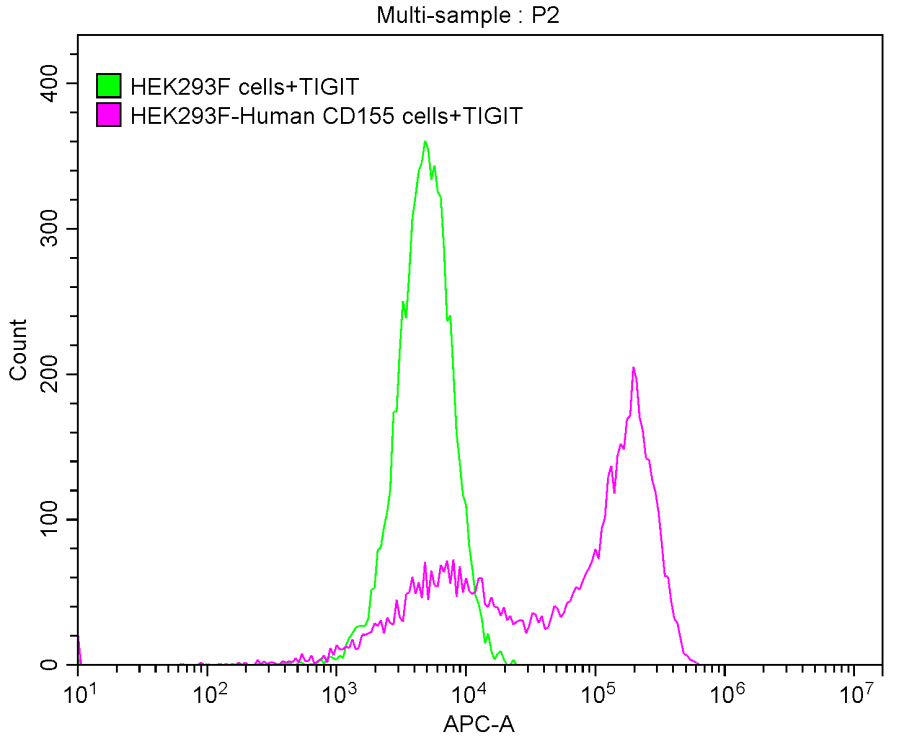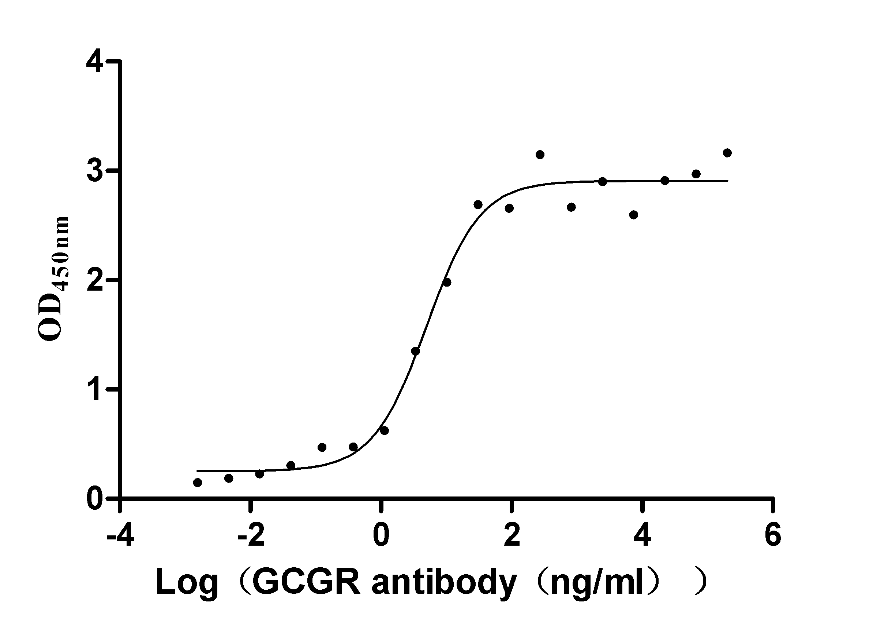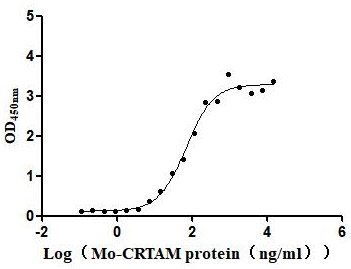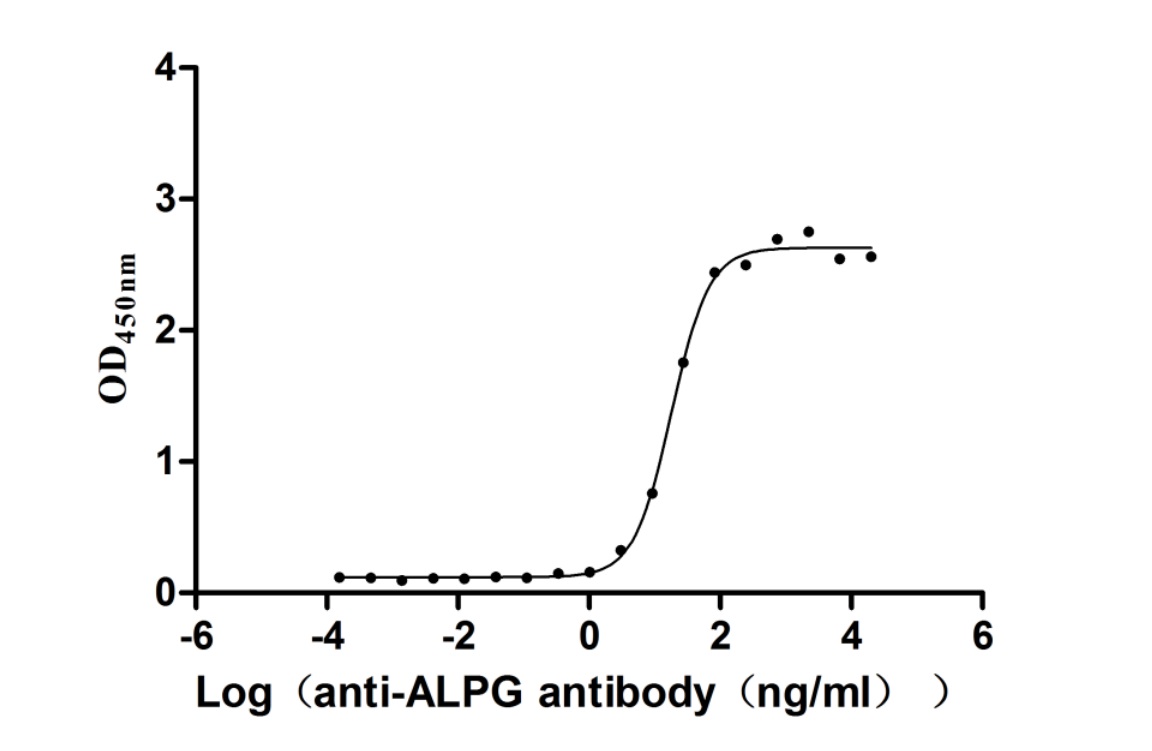Recombinant Mouse V-type proton ATPase subunit B, brain isoform (Atp6v1b2)
-
中文名稱:Recombinant Mouse V-type proton ATPase subunit B, brain isoform(Atp6v1b2)
-
貨號:CSB-YP002398MO
-
說明書:
-
規格:
-
來源:Yeast
-
其他:
-
中文名稱:Recombinant Mouse V-type proton ATPase subunit B, brain isoform(Atp6v1b2)
-
貨號:CSB-EP002398MO
-
說明書:
-
規格:
-
來源:E.coli
-
其他:
-
中文名稱:Recombinant Mouse V-type proton ATPase subunit B, brain isoform(Atp6v1b2)
-
貨號:CSB-EP002398MO-B
-
說明書:
-
規格:
-
來源:E.coli
-
共軛:Avi-tag Biotinylated
E. coli biotin ligase (BirA) is highly specific in covalently attaching biotin to the 15 amino acid AviTag peptide. This recombinant protein was biotinylated in vivo by AviTag-BirA technology, which method is BriA catalyzes amide linkage between the biotin and the specific lysine of the AviTag.
-
其他:
-
中文名稱:Recombinant Mouse V-type proton ATPase subunit B, brain isoform(Atp6v1b2)
-
貨號:CSB-BP002398MO
-
說明書:
-
規格:
-
來源:Baculovirus
-
其他:
產品詳情
-
純度:>85% (SDS-PAGE)
-
基因名:
-
Uniprot No.:
-
別名:Atp6v1b2; Atp6b2; Vat2; V-type proton ATPase subunit B; brain isoform; V-ATPase subunit B 2; Endomembrane proton pump 58 kDa subunit; Vacuolar proton pump subunit B 2
-
種屬:Mus musculus (Mouse)
-
蛋白長度:Full length protein
-
表達區域:1-511
-
氨基酸序列MALRAMRGIV NGAAPELPVP TGGPMAGARE QALAVSRNYL SQPRLTYKTV SGVNGPLVIL DHVKFPRYAE IVHLTLPDGT KRSGQVLEVS GSKAVVQVFE GTSGIDAKKT SCEFTGDILR TPVSEDMLGR VFNGSGKPID RGPVVLAEDF LDIMGQPINP QCRIYPEEMI QTGISAIDGM NSIARGQKIP IFSAAGLPHN EIAAQICRQA GLVKKSKDVV DYSEENFAIV FAAMGVNMET ARFFKSDFEE NGSMDNVCLF LNLANDPTIE RIITPRLALT TAEFLAYQCE KHVLVILTDM SSYAEALREV SAAREEVPGR RGFPGYMYTD LATIYERAGR VEGRNGSITQ IPILTMPNDD ITHPIPDLTG YITEGQIYVD RQLHNRQIYP PINVLPSLSR LMKSAIGEGM TRKDHADVSN QLYACYAIGK DVQAMKAVVG EEALTSDDLL YLEFLQKFEK NFITQGPYEN RTVYETLDIG WQLLRIFPKE MLKRIPQSTL SEFYPRDSAK H
-
蛋白標簽:Tag?type?will?be?determined?during?the?manufacturing?process.
The tag type will be determined during production process. If you have specified tag type, please tell us and we will develop the specified tag preferentially. -
產品提供形式:Lyophilized powder Warning: in_array() expects parameter 2 to be array, null given in /www/web/cusabio_cn/public_html/caches/caches_template/default/content/show_product_protein.php on line 662
Note: We will preferentially ship the format that we have in stock, however, if you have any special requirement for the format, please remark your requirement when placing the order, we will prepare according to your demand. -
復溶:We recommend that this vial be briefly centrifuged prior to opening to bring the contents to the bottom. Please reconstitute protein in deionized sterile water to a concentration of 0.1-1.0 mg/mL.We recommend to add 5-50% of glycerol (final concentration) and aliquot for long-term storage at -20℃/-80℃. Our default final concentration of glycerol is 50%. Customers could use it as reference.
-
儲存條件:Store at -20°C/-80°C upon receipt, aliquoting is necessary for mutiple use. Avoid repeated freeze-thaw cycles.
-
保質期:The shelf life is related to many factors, storage state, buffer ingredients, storage temperature and the stability of the protein itself.
Generally, the shelf life of liquid form is 6 months at -20°C/-80°C. The shelf life of lyophilized form is 12 months at -20°C/-80°C. -
貨期:Delivery time may differ from different purchasing way or location, please kindly consult your local distributors for specific delivery time.Note: All of our proteins are default shipped with normal blue ice packs, if you request to ship with dry ice, please communicate with us in advance and extra fees will be charged.
-
注意事項:Repeated freezing and thawing is not recommended. Store working aliquots at 4°C for up to one week.
-
Datasheet :Please contact us to get it.
靶點詳情
-
功能:Non-catalytic subunit of the V1 complex of vacuolar(H+)-ATPase (V-ATPase), a multisubunit enzyme composed of a peripheral complex (V1) that hydrolyzes ATP and a membrane integral complex (V0) that translocates protons. V-ATPase is responsible for acidifying and maintaining the pH of intracellular compartments and in some cell types, is targeted to the plasma membrane, where it is responsible for acidifying the extracellular environment. In renal intercalated cells, can partially compensate the lack of ATP6V1B1 and mediate secretion of protons (H+) into the urine under base-line conditions but not in conditions of acid load.
-
基因功能參考文獻:
- ATP6V1B2 is a molecular target of SIRT1 in fat cells. PMID: 26177453
- Disruption of vacuolar H+-ATPase a3-B2 subunit interaction inhibited osteoclast bone resorption. PMID: 20837476
- expressed in most, if not all, proton-secreting cells in the epithelium lining the nephron and the collecting ducts, and it is also present in proton-secreting clear cells of the epididymis PMID: 15013950
- Redistribution of Atp6v1b2 occurs from intracellular compartments into the apical membrane of epididymal clear cells from Atp6v1b1(-/-) mice. PMID: 17392376
- the activity of apical B2-containing V-ATPase holoenzymes in A intercalated cells is sufficient to maintain baseline acid-base homeostasis PMID: 17898041
顯示更多
收起更多
-
亞細胞定位:Apical cell membrane. Melanosome. Cytoplasm.
-
蛋白家族:ATPase alpha/beta chains family
-
組織特異性:Kidney; found in early distal nephron, encompassing thick ascending limbs and distal convoluted tubules and in the alpha-intercalated cells of the cortical collecting ducts (at protein level). Expressed in epididymal clear cells (at protein level). Mainly
-
數據庫鏈接:
Most popular with customers
-
Recombinant Human T-cell immunoreceptor with Ig and ITIM domains (TIGIT), partial (Active)
Express system: Mammalian cell
Species: Homo sapiens (Human)
-
Recombinant Human Glucagon receptor (GCGR), partial (Active)
Express system: Mammalian cell
Species: Homo sapiens (Human)
-
Recombinant Human IL12B&IL12A Heterodimer Protein (Active)
Express system: Mammalian cell
Species: Homo sapiens (Human)
-
Recombinant Mouse Cell adhesion molecule 1 (Cadm1), partial (Active)
Express system: Mammalian cell
Species: Mus musculus (Mouse)
-
Recombinant Human Alkaline phosphatase, germ cell type (ALPG) (Active)
Express system: Mammalian cell
Species: Homo sapiens (Human)
-
Recombinant Human Tumor necrosis factor ligand superfamily member 15(TNFSF15) (Active)
Express system: Mammalian cell
Species: Homo sapiens (Human)
-
Express system: Mammalian cell
Species: Homo sapiens (Human)







-AC1.jpg)










